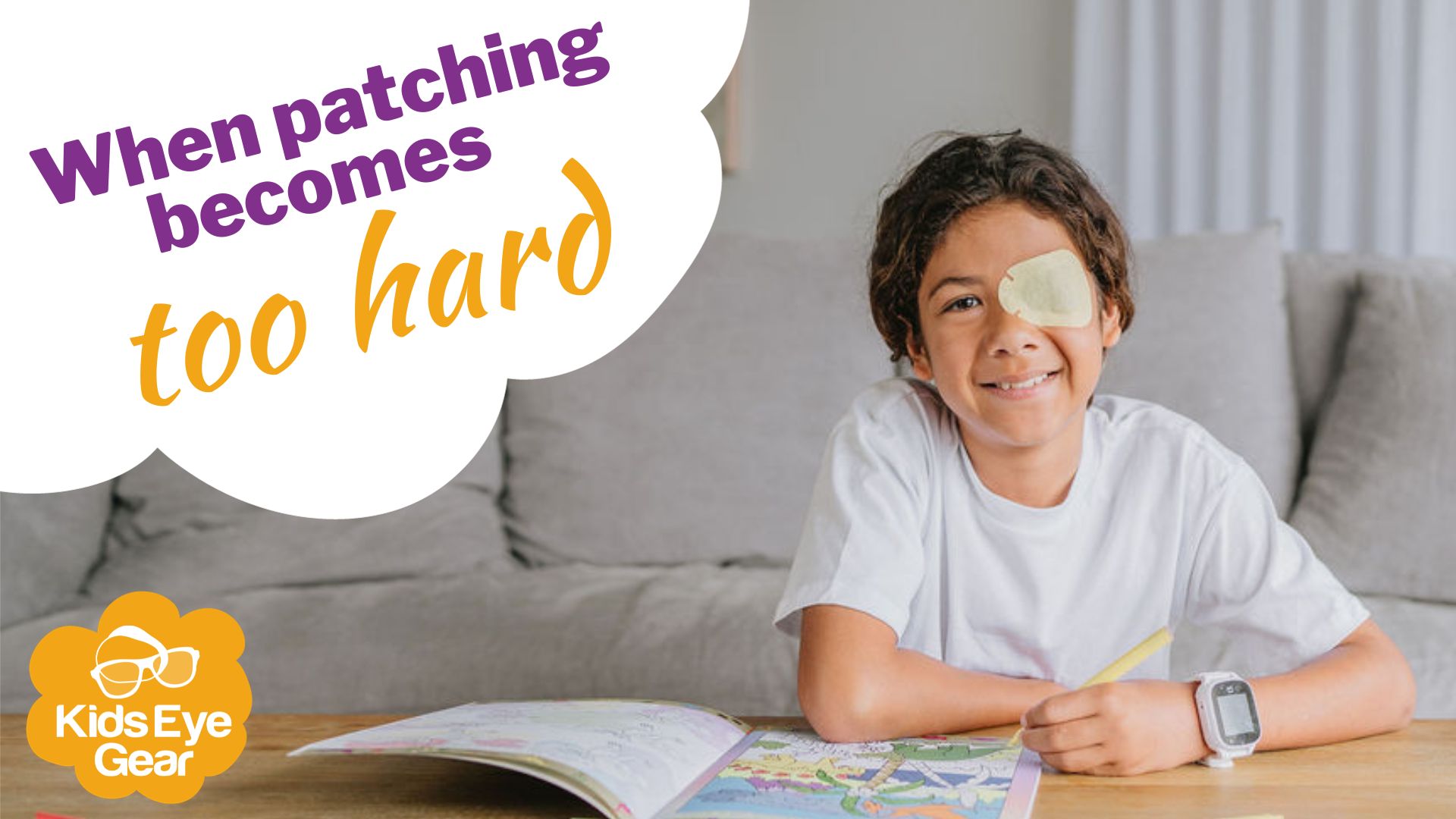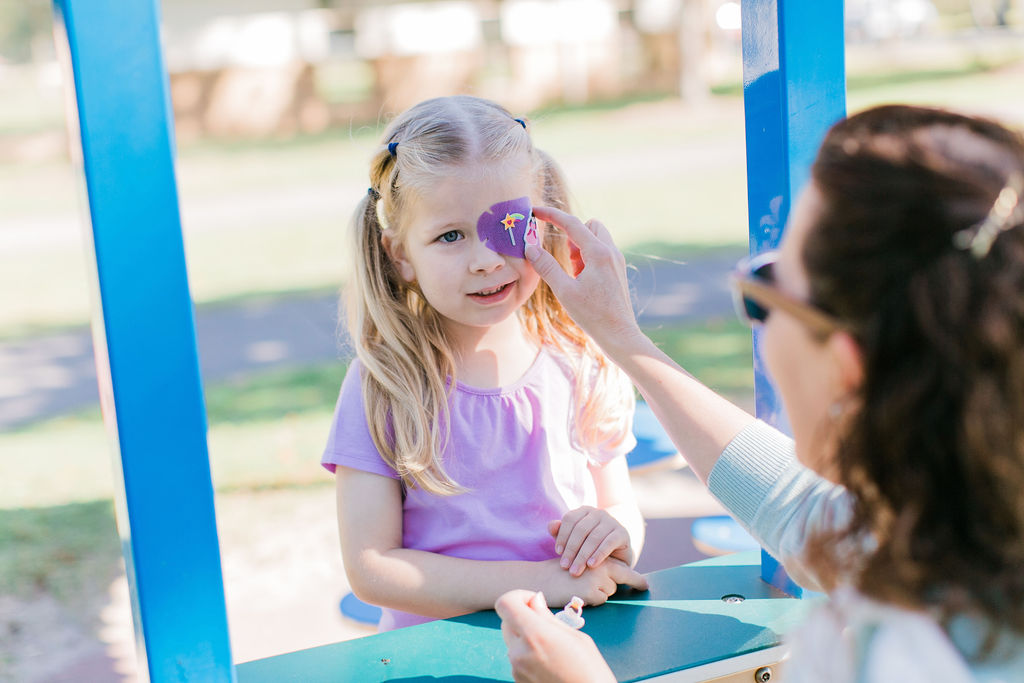When patching becomes too hard
1st Oct 2023

Any patching parent will tell you that there are good days and bad days when it comes to patching their child. Some days your delightful infant will happily go about their business with their patch on, while other days they’ll be a screaming mess, pulling off ten patches in an hour. But what options are there if a child just won’t patch?
First up, let’s talk about occlusion therapy.
Occlusion therapy is used for a variety of reasons but in essence it simply involves covering one eye so that the other eye can work harder to catch up. The point of occlusion therapy is to train the eye back to normal, or as close as, vision. There seems to be disagreement as to the cut off age for the effectiveness of occlusion therapy but in general, the earlier problems are treated, the better. Children reach visual maturity by the age of 10, hence why it is so important to treat as early as possible for best results.
Occlusion therapy is most often done with patches, as they are not invasive and generally not expensive – I know some parents will disagree but they’re still cheaper than surgeries. Patching can be challenging and there are kids who just won’t comply, so other options may have to be considered. These are typically ‘last resorts’ and are prescribed only after continual attempts at patching.
Atropine Drops
Instead of blocking the ‘good’ eye with a patch, atropine drops can be used to blur vision. This seems to be the first option to try after patching. The obvious cons with this option are that the child would be receiving medication every day and that instead of just pulling the patch off when done, it’s necessary to wait for the drops to wear off.
Contact Lenses
There are two options with using contact lenses - over-plussing or over-minusing the lens, or by using a blacked-out occluder contact lens. As a parent, I think I’d be a little concerned about the over-plussing and over-minusing option. Obviously if your child doesn’t typically wear contact lenses, learning to insert and remove lenses is a hurdle.
Bangerter occlusion foils
These seem to be like pieces of paper that adhere to the inside of the child’s glasses, essentially making everything blurry. I’ve personally never seen them or heard of any parent that has used them. Given that we’re told even fabric patches need to block all light and go around the side of glasses, I’m not sure about how well these would work.
Virtual Reality Therapy
Pretty exciting is the emergence of virtual reality technologies to help treat amblyopia. These are starting to enter the Australian market and are typically delivered by behavioural optometrists. More suited to older children, check with your ophthalmologist or optometrist if this is something that might be suitable for your child and where a system can be accessed.

Seek help if you need it
Patching can often be a challenging task and unfortunately we parents bear the brunt of the responsibility in ensuring compliance from our children. In retrospect, our five years of patching with Dane were not as hard as I know other parents experience. Sure he had bad days and bad stages but non-compliance wasn’t an option as far as we were concerned and fortunately he was a pretty easy-going kid.
I know that it isn’t as simple for other families though so
if you are having difficulty with patching, check out some of the helpful
Facebook groups where you’ll get great support from other parents. There are also plenty of helpful tips on our blog. But if it’s all
getting impossible and you're at the point of giving up - don't! See your ophthalmologist so you can discuss other options.
Source : American Academy of Ophthalmology

